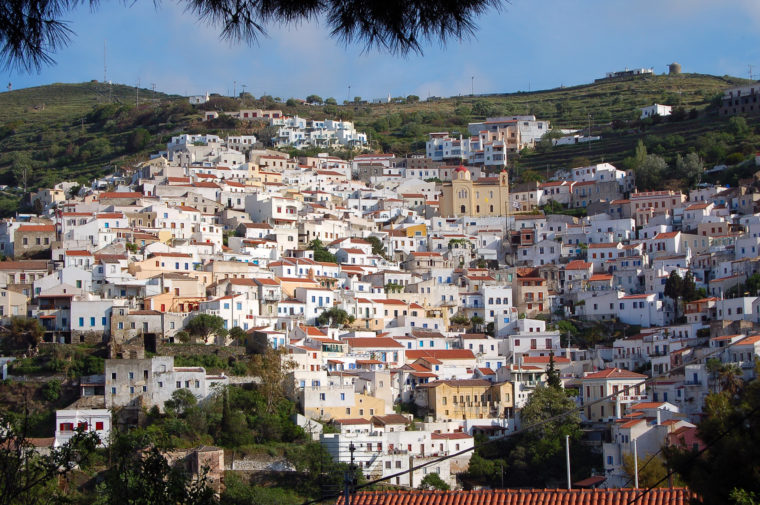Although close to Athens – just an hour away from the port of Lavrio – the island of Kea (aka Tzia) is not well-known by tourists (yet) and has thus remained quiet and authentic.
Unlike most other islands in the Cyclades, Kea is quite fertile and green. It is an island with numerous natural attractions, rich traditions and authentic hospitality.
The island has fanatic admirers, mostly Greeks, since it maintains its traditional character, charming its visitors with its beautiful communities and villages, archaeological sites, as well as its spotless beaches and forests. Those that enjoy visiting the island begin their getaways around Easter time and, for the most part, end them sometime in early November.
In the Archaic period, the island was divided between four city-states: Ioulis, Karthaia, Poiessa and Koressos – which are connected by 36 kms of cobbled trails. Today, the main town of Kea is Ioulis, a beautiful traditional settlement built on the side of a hill, with a Venetian castle from the 13th century dominating on the top. The three other ancient cities are mentioned in Greek mythology as having been the first home of the Water Nymphs.
During the Byzantine period the prosperity of the island rose, but the island was considered in 1204 when it was captured by the Venetians in the wake of the Fourth Crusade. It was re-captured for a short period by the Byzantines before falling again to the Venetians, who built the famous castle on the ancient acropolis of Ioulis. Kea was taken from the Venetians by the Ottoman Turks in 1537, and following the Greek War of Independence, Kea finally joined Greece.
Kea has something for everyone: adventure seekers can explore the exciting hiking trails and underwater shipwrecks or go off-roading over the wild terrain; sailing aficionados frequent the island due to its proximity to the Attica mainland; eco-minded visitors are attracted to places like La Maison Vert-Amande, a local house and farm owned by a French-Greek couple and rented out to visitors – as well as the fact that the eastern part of the island boasts the largest oak forest in the Cyclades (included in the Natura 2000 network) which is perfect for bird-watching; art history buffs can admire the carved lion statue, the Lion of Ioulis – the guard and emblem of the island; individuals interested in religion can visit the church of Agios Sostis in September for its annual festival (or any one of the other 130 churches and cathedrals on the island – let alone the Byzantine monasteries and shrines); foodies can explore olive groves and vineyards (and of course, taste the fabulous foods), etc.
Photos and articles from various newspapers, including The Telegraph, illustrate the unique houses of Kea – with pitched roofs of clay tiles – much more substantial than the usual Greek cube since the island has always been a prosperous and self-sufficient island.
And Kea has remained simple and authentic – the way the Greek islands used to be before they were overrun by tourists. So if you’re in the market for a truly traditional Greek-island vacation, without the thumping disco music, Kea might be the perfect escape for you.
Source: The National Herald

